Bike racks for cars
Iain Treloar takes a look at the different styles of racks available to transport your precious cargo.
In the summer holiday migration, the sight of a family of bikes hanging on racks on the back of cars or adorning car roofs is common. What isn’t immediately apparent is how much variety there can be between different types of rack on the market, what will suit your vehicle and the best mounting method.
The wide spectrum of different types of bike racks can be split into three basic types – roof mounted, towball mounted and strap-on racks. As with most things, all of these options have their pros and cons.
Towball mounted racks
These are the most economical and most common style, and come in a wide variety of different permutations. Broadly speaking, they are either an A-frame shape or a single pole.
In some cases, the A-frame will allow you to tow a trailer as well, while other options have removable bases or the ability to tilt down to allow the boots of station wagons and 4WDs to open. The tilting version, at first glance, seems greatly beneficial, but in most cases does not justify the added expense. Unless you’re a weightlifter, you’ll be unable to tilt the rack with a full load of bikes, so the tilting function in reality is only of use when the rack is not loaded. Therefore, in most cases it will be far more cost-effective to just buy a standard removable base rack instead as they are easier to remove entirely. Cheaper racks remove any of this functionality, and are as simple as a metal pole that is attached to the tow-bar with a big spanner. As this is usually a fairly tedious and involved process, it’s worth considering spending a little extra to get one of the removable base types, as they are much less hassle.
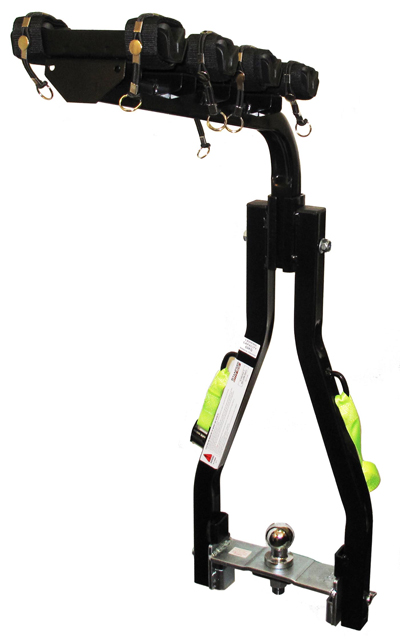
Another consideration for the towball mounted racks is that they are not suitable for use with carbon-fibre frames. Carbon frames are very tough in certain directions, but are not designed to be clamped onto in the centre of the tube; this is an easy way to write off an expensive frame. For this type of precious cargo, it’s best to use a roof-mounted rack.
It’s also worth noting that the cheapest and most common basic racks are not appropriate for most bikes currently on the market, regardless of frame material. This style, with a metal plate lying across the top of the rack screwed down onto the top tubes of the bikes, tends to be constructed with a very narrow top tube in mind. With narrower gauge steel frames (as was common on the market in the 1980s and 1990s when these racks had their heyday) this is not a problem – most bikes on the market now, however, are aluminium-framed and use much thicker or non-round tubing in the frame, which sits awkwardly in the older racks. Adaptor bars can be a good work around for these issues, and also mean that small or unconventionally-shaped bikes will be able to fit onto your rack.
In addition to the towball mounted variety, there is a further sub-category which also falls into the same broader designation – the square hitch style, popularly (although incorrectly) known as Hayman Reese. There are two common sizes for this, with 2” the most popular size as it allows a greater towing capacity, and 1 1/4” appearing less frequently. There are models available on the market that can be adapted to suit both, but it’s worth confirming before making a purchase nonetheless. Perhaps the most convenient option consists of a platform that the bikes sit on at the back of the car, such as the GripSport Hi-Ride, Kuat NV or Thule Euroclassic G6.
Perhaps the most convenient option consists of a platform that the bikes sit on at the back of the car, such as the GripSport Hi-Ride, Kuat NV or Thule Euroclassic G6.
Roof-mounted racks
These are most popular for high-end and lighter weight bikes, as they are easier to lift above the head to place on the roof of the car. These are also of benefit for carbon frames, as they do not clamp aggressively onto the fragile centre of the frame’s tubes.
There are a couple of different varieties of these commonly on the market; generally they either allow the entire bike to stand upright on the roof with an arm clamping around the downtube (such as the Thule Proride 591), or require you to remove the front wheel and attach by clamping the fork in a quick-release axle-substitute (such as the Rola BCF2 pictured here). In both cases, wheels are also attached by straps onto the roof-rack. The quick-release axle substitute can also be found separately and adapted for use in the back of utes or vans.
Although roof-mounted racks are the lowest impact for the bike and a great solution, there are nonetheless a couple of drawbacks. On long journeys, you can expect the front of your bike to get spattered with dead insects (bees are particularly grisly). More alarming is that drivers occasionally forget they have bikes on the roof, thus causing costly damage when they drive into their garage. And finally, they’re one of the more complex items to purchase, with a wealth of different mounting kits and roof-bars available if your car doesn’t already have them; in many cases these are specific all the way down to model year of your particular vehicle.
Strap-on rear racks
These attach using straps and are frequently marketed as fitting on a majority of cars. In many cases (especially newer vehicles) this is not the case; they require a reinforced, flat bumper rather than the sloping plastic ones on lots of newer cars (especially hatchbacks).
Beware that many of these racks rely on the tension on the straps in opposing directions to maintain a secure mount for the bikes. If you hoon over speedbumps or drive over bumpy terrain, straps can come loose or completely disengage. It’s a good idea to stop regularly and check the straps are still tensioned and balancing each other.
There are certain options with solid metal ‘straps’ but these can be quite specific to particular car models and are more likely to scratch at the mounting point to the car than their nylon-strapped cousins.
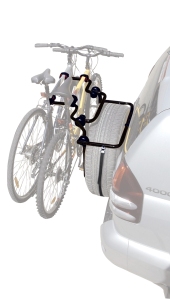 There are also options available that fit onto rear tyres which are an option that may suit those with SUVs. Keep in mind that many rear-mounted tyres on SUVs sit off-centre, and this will mean that you will have bikes hanging out significantly wider than the car.
There are also options available that fit onto rear tyres which are an option that may suit those with SUVs. Keep in mind that many rear-mounted tyres on SUVs sit off-centre, and this will mean that you will have bikes hanging out significantly wider than the car.
There are a number of different brands competing in this market, ranging from very cheap strap-on racks that can cost as little as $70 (only for infrequent use) up to quite high-end models by premium brands such as Saris. There are also a growing number of racks that strap on but rest on the boot and bumper of a sedan instead of hanging supported by the straps alone, providing a much more secure mount, accommodating most rear spoilers and avoiding the load-bearing issues previously discussed.
Note that both tow bar and strap-on racks might obscure your licence plate, requiring you to have one displayed at the back of the rack. Handmade plates are not allowed. You must purchase a substitute plate from your road authority. You must detach the rack when not in use.
Out of the norm?
With the mind-boggling range of car/bike configurations available, it may be that none of the options outlined suit your precise needs. Electric bikes or downhill bikes, for instance, are often too heavy to lift onto the roof or mount on some strap-on racks. Similarly, you may struggle to find an off-the-shelf product that suits your requirements if you need to tow a caravan or trailer at the same time as carrying bikes. Or perhaps you need to be able to transport a trike or a tandem. In such cases, it may be worth investigating getting something custom fabricated. GripSport are one such Melbourne-based business who manufacture bike carriers outside the remit of the larger companies, which go through more conventional distribution channels instead of directly engaging with the customer on a case-by-case basis.
CONCLUSION
If you’re uncertain of what will work best for your needs and your vehicle, ask at your local bike shop or a dedicated roof-rack dealer. In most cases, with a little research and a process of narrowing down the options, you’ll be able to find a suitable solution. With the variety of models from a number of quality brands available on the market, the process of purchasing a rack is one that may appear daunting at first. Rest assured, however, that regardless of whether you’ve got a road bike, dualie or a family’s worth of kids bikes to transport, there’s an option on the market for you.
Ride On content is editorially independent, but is supported financially by members of Bicycle Network. If you enjoy our articles and want to support the future publication of high-quality content, please consider helping out by becoming a member.


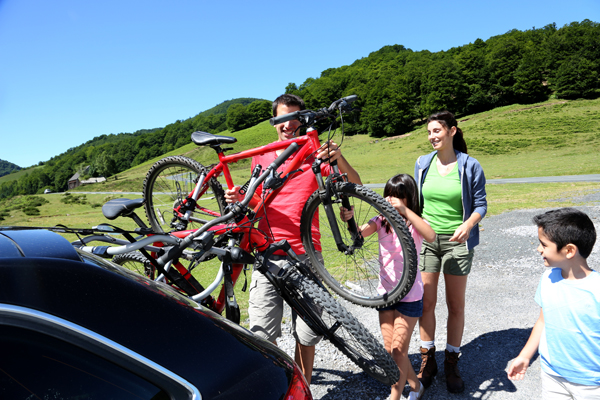
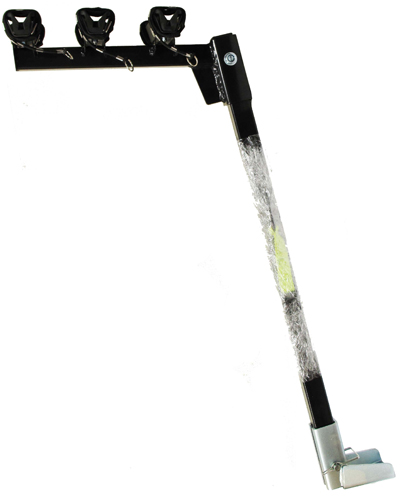
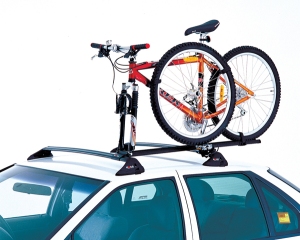
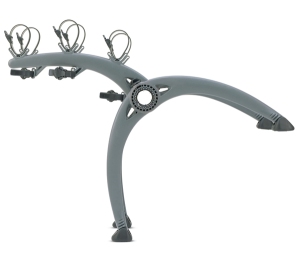
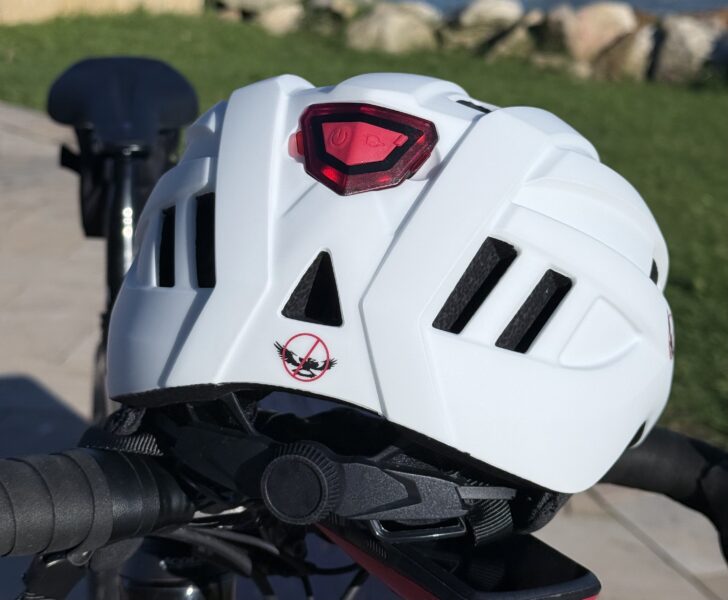





The in-laws are getting us racks for xmas so this was really informative – thanks!
We have recently bought the Thule euro classic LED unit and it is fantastic, for the mountain bikes or the carbon roadie it works a treat, tilts out for the hatch back and is light enough for my wife to fit, love it, and recommend it.
… or Greenspeed recumbents. I solved that one by creating a 3 point carrier. A post on the towbar suppported a horizontal 75 x 12mm hd timber that attached forward onto one roof bar.The trike then rolled up the boot lid and rear window, onto the single bar, and was held by custom wheel clamps. Saved lifting this awkward beast all at once.
Another option with tow bar mounted rakes is to use a Buzz Bar (by Buzz Rack). This bar fits (locks) between the seat post and the stem and overcomes the problem of clamping carbon frames and the lack of space in MTB frames to actually fit over the rack. I have been using one for some time and swear by it. 🙂
A well written and very helpful article, Iian.
Your advise is very well timed as i had been wondering about my options for carrying my bike over the break..
Good article. I purchased a tow bar mounted carrier that attaches with two screws which are easily and quickly fastened and unfastened with an allen key (supplied). The horizontal bar, to which the bikes are strapped has no channelling or fixtures it is simply covered in a protective neoprene like material. This allows the freedom to strap the bikes anywhere along the tube and takes varying diameter and angled bike cross bars. It comes with small elastic straps which are simple to use (no nasty hooks). I also use a couple of small tension straps available from Bunnings. I regularly carry four every day (not light) bikes on it.
Be aware that in Western Australia there is no way to legally carry a bike on a towbar mounted rack, despite the hundreds sold. Inevitably bikes on such racks will obscure the number plate and in WA you are not permitted to use a third number plate or a copy of a number plate. A change in the law to enable a third plate is long overdue, but it appears there is no rush for this to happen. A cynic may say this is because it provides another opportunity to harass drivers and raise revenue: people have been fined for obscured number plates when transporting bikes on such carriers.
Thanks for letting us know Chris.
There is some reasonable advice here, but your comment on the tilting towball mounted racks is quite frankly crap. We have a Rhinorack similar to the thule 990. My 5yo daughter has been trained to operate the tilt and does so safely to tilt down with 3 adult bikes onboard. The only difficulty for her is she is too short/small to lock the bikes back in the flat position. This does require some coordination and strength at full arm extension.
What MUST be noted as you do in the article, with most rear mounted bike racks is the necessity of a numberplate. Even if you can see the car plate clearly, you will find Police will most likely not find this acceptable. Smaller bike plates can be ordered online via the Vicroads website and need to be ordered some 4-6 weeks before your trip to be safe. Home made versions are not always accepted either as they do not have the reflective surface “regular” plates do.
Bicycle Rack Plates cost less than $30 and I regard them as a purchase cost when I get a new vehicle. Tihs is vic roads official information and from here follow the link to purchase online. http://www.vicroads.vic.gov.au/Home/Registration/NumberPlates/StandardNumberPlates/BicycleRackNumberPlates.htm
Thanks Bill, that’s great info, particularly for Victorian readers.
Hi there,
This is a great article.
I have had experience with a towbar mounted rack and roof mounted racks. I think the towbar mounted rack was a Bird’s Beak from memory. The base portion was fitted “permanently” using the tow ball and the rack slotted into the base, either protruding back to carry the bikes or it could be removed and refitted 90 degrees around so it would not protrude backwards when the bikes were not being carried. I believe it is illegal to have a bike rack protruding rearwards if the bikes are not fitted.They came in configurations to cary 2, 3 or 4 bikes. The one we had carried 4 bikes and was fitted to the back of our X-trail SUV. When loaded we noticed the steering was much lighter and the car did not feel as stable. It was also difficult to gain access to the rear of the car once the rack was fitted. We did not consider roof mounted racks with the X-trail as they were too high to load.
When we bought a conventional station wagon we fitted roof mounted racks (Thule 591) that carries the complete bike and clamp around the frame. The bikes are very quick and easy to load and unload. You do not have to worry about where to carry the front wheel or take time to fit it when you arrive for a group ride. We do not notice any difference in the ride of the car with 4 bikes on top apart from a bit of wind noise from the racks. The only down side is the expense (you get what you pay for) and forgetting the carbon fibre road bike on the roof when driving into the garage. You only tend to do this once and the damage was repaired. I am assured by the bike repairer that nearly everyone has done this if they carry their bike on the roof. When my wife drove under a low barrier at a shopping centre with an alloy framed hybrid the plastic mounting legs on the roof bar broke and there was no real damage to the bike. I ended riding the bike home! The car did not fare so well with panel damage caused by a falling bike.
Overall I prefer the roof mounted rack over the towbar mounted type.
I would also comment that the roof-mounted racks are difficult to use for the “shorties” amongst us. We just can’t get the reach or leverage (even standing on the footpath with the car parked on the road).
Am thinking of getting this product from USA.
Seasucker Bike Rack http://www.seasucker.com/
Happy user of a Thule Proride 591 rack here. No issues with WA laws on number plates this way 🙂
We have repeatedly proven that the rear mounted hitch racks are effective in preventing cars in the USA from being billed on electronic tolls!! This is for the same reason that they are illegal in WA (however, enforcement of the blocked license plate law is far less prevalent here).
Something worth noting as a disadvantage of the roof mounted racks are that they can more easily come loose at the fork mount. If the screw is not done up tightly, or if the lawyer lips have been filed off (common on bikes used in races, as it facilitates faster wheel changes), then the front fork can come loose and the dropouts can be damaged.
Also FWIW, it is practically unheard of to hear someone mention that you could potentially damage the frame when using the top-tube clamp style mount for the racks. In fact, the only problem I’ve heard to date with rear racks (apart from those mentioned here already) is to make sure that the wheels are not located near the exhaust pipe. Two of my friends have had problems with this; in one case the tire exploded after heating up due to the exhaust pipe, and the second problem was that one of the guys who was using tubular tires had the glue melt off his rims and his tire rolled right off the rim. I have heard unconfirmed reports of carbon fiber wheels such as Zipp wheelsets being damaged from the exhaust gases; all in all it convinced me that it is a bad idea to have the wheel sitting behind the exhaust pipe.
Thanks for this great article, which helped me in my (unfortunately unsuccessful) search for a portable bike rack that straps on to the back of my new car. I used to have a towbar type rack one on my previous car, but I didn’t like the fact that I’m carrying around a great weight unnecessarily when bikes aren’t on the car – which is most of the time. However, I was disappointed to discover that that the portable racks are not designed for the new style of hatch cars with high rear lights that are partly on the hatch, and even the hooks themselves don’t fit. I tried several types without any luck. Does anyone have any tips?? (I don’t really like the roof racks either, for some of the reasons mentioned in the other comments and because of the difficulty of lifting non-carbon-fibre hybrid bikes).
The Thule towball mounted 916 EuroPower 2 Bikehttp://www.thule.com.au/details.php?p_id=92 carries our 2 electric bikes or one electric and one Cruzbike (recumbent with ease.
In Queensland an accessory number plate is legally required and is available for $60. http://www.tmr.qld.gov.au/Registration/Number-plates/Are-my-number-plates-legible-and-easy-to-see.aspx
I realy have some experience in the racks business and I always recomend Thule against any other brand. it is true that it is a lot of marketing in this brand but they back it up with great quality and engeniring.
The best rear bike platforms for use with a towball are designed right here in Australia. You mention the Gripsport one but there is a more advanced (and more expensive) one available from ISI Advanced Bicycle Carrier Systems in Melbourne – see http://www.isi-carriers.com/index.html. They are much better designed than the bulky and expensive Thule ones.